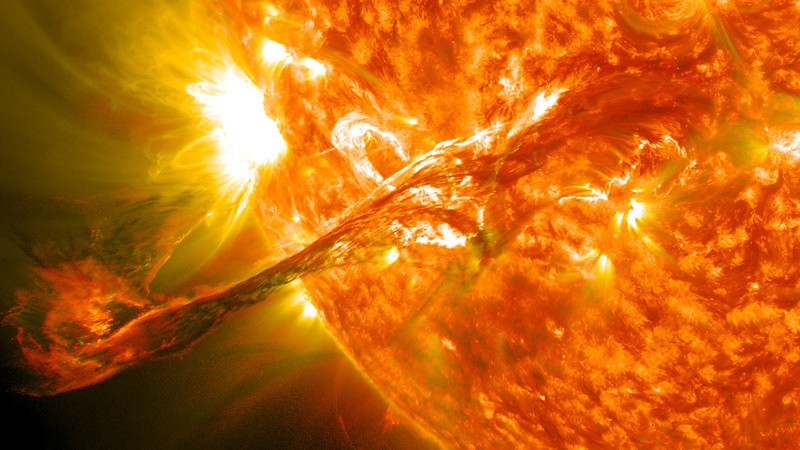During a massive solar storm like the Carrington Event, the sun blasts its material into space, which can wreak havoc on technologies and pose risks to humanity's safety-critical systems.

Greatest Solar Storm
The large solar storm Carrington Event traces raged the space back in September 1859, a few months before the solar maximum took place in 1860. In August of 1859, astronomers were astonished to see a growing number of sunspots, and one of them was Richard Carrington from Redhill, Surrey, U.K.
Carrington sketched the sunspots he observed on Sep.1 until, out of the blue, a flash of light - a solar flare- emerged in the sky. NASA noted that this was associated with a Coronal Mass Ejection (CME) because the next day, a geomagnetic storm occurred.
The scientist figured that the solar flare he observed was certainly responsible for the geomagnetic disturbance. Hence, the 1859 solar storm is known as the Carrington Event as a tribute to his scientific contribution.
These phenomena, as observed today as space weather, can cause massive disruptions on satellites and several electronic technologies, noted by the European Space Agency.
NASA Earth Observatory said that this space weather originated from contortions within the sun's magnetic field, generating dark blotches or sunspots on the sun's surface. Through these spots - solar flares, coronal mass ejections, and electromagnetic phenomena appear - that could possibly cause hazards to human's technological way of living.
When Is the Next Solar Storm?
Space.com said that sunspots rise and fall on an 11-year cycle, so there's a possibility that they could appear again since the next solar minimum will happen in 2025.
The solar storm happens near our planet, particularly when a solar material thrown by the sun reaches the Earth. It is worth noting that there are two types of this storm: Geomagnetic storms and solar radiation storms.
Geomagnetic storms are triggered by a clump of solar material, which is called a CME. It can cause damage to the Earth's magnetic environment.
While solar radiation storms are composed of a stream of faster moving materials blasted by the sun. As dangerous as it may seem, the planet's magnetic field protects us from these storms.
However, solar radiation storms can deeply compromise space missions.
According to the National Oceanic and Atmospheric Administration (NOAA), the largest CME can have billions of tonnes of solar material and can be blasted out from the sun up to 3,000 km per second.
NOAA made a standard of geomagnetic storms on a scale from G1, which can increase auroral activity and cause minor disruptions to power supplies, up to G5, where massive storms like the Carrington event occur.
Last March, we experienced a relatively common storm at a scale of G3. But even a G2 can still cause significant damage. SpaceX proved this in Feb 2022 when it lost 40 satellites after a solar storm.
A study by scientists found that, on average, there is a 4% chance of one massive solar storm per year and a 0.7% possibility of having another Carrington event.
But the researchers also noted that a super-storm could occur "more often than we thought." Which means that it could happen at any time, and it can be unpredictable.
Related Article : NASA Snaps Intense Solar Flare from the Sun
This article is owned by Tech Times
Written by Joaquin Victor Tacla
ⓒ 2026 TECHTIMES.com All rights reserved. Do not reproduce without permission.




